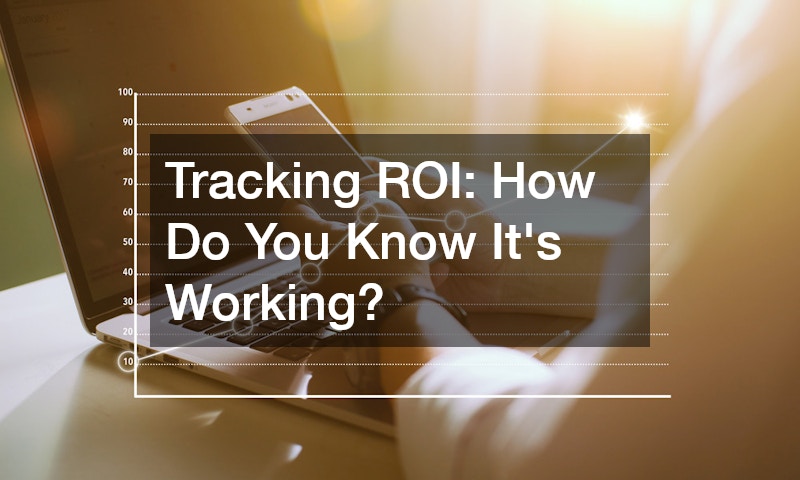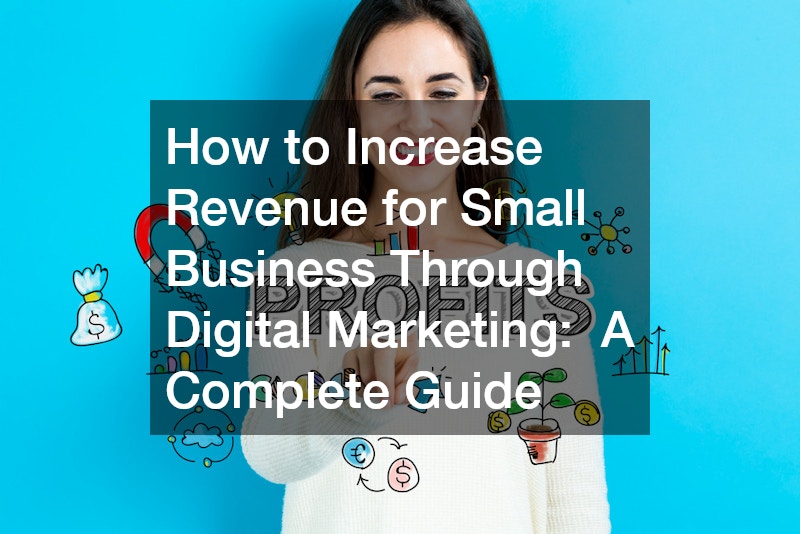
In today’s hyper-competitive landscape, digital marketing has become essential for small businesses looking to generate sustained revenue growth. Unlike traditional marketing channels, digital strategies offer real-time data, cost-effectiveness, and highly targeted campaigns. By leveraging tools such as search engine optimization (SEO), social media, email marketing, content creation, and paid advertising, small businesses can scale and connect with both existing and new customers—all while closely tracking ROI.
This comprehensive guide will walk you through the most effective digital marketing tactics to help you grow revenue strategically and sustainably.
What Makes Digital Marketing a Revenue Driver for Small Businesses?
Digital marketing gives small businesses at least three key advantages. First, it’s data-driven, providing immediate insights into what’s working and what isn’t—allowing you to allocate budget effectively. Second, it offers precision: you can target very specific demographics, interests, and behaviors, reducing wasted ad spend. Finally, it provides scalability. Whether you’re selling local services, digital products, or physical goods, digital channels can flex to fit your goals—from lead generation to e-commerce conversions.
Because of these strengths, businesses that embrace digital marketing can compete more effectively—even against larger companies with bigger budgets. Success comes down to setting clear goals, selecting the right channels, and continually optimizing campaigns based on performance data.
SEO: Your Organic Traffic Engine

Why Focus on SEO?
Achieving top rankings on search engines like Google means free, consistent traffic from people actively looking for your product or service. Over time, SEO can deliver compounding returns, dramatically increasing visibility and credibility in your industry.
Core SEO Tactics
- Keyword Research
• Identify search terms your target audience uses, including long-tail keywords like “how to increase revenue for small business.”
• Utilize tools such as Google Keyword Planner, Ahrefs, or Moz to assess search volume, competition, and relevance. - On-Page SEO
• Ensure the primary keyword appears in your page title, H1 tag, and URL structure.
• Write compelling meta titles and descriptions, include internal links, and optimize image alt tags. - Technical SEO
• Enhance page load speed, ensure mobile responsiveness, and deploy schema markup for rich search results. - Content Strategy
• Develop detailed, authoritative pages and blog posts addressing your audience’s specific needs.
• Use topic clusters to interlink pillar content and supporting articles. - Local SEO (if applicable)
• Claim and optimize your Google Business Profile (formerly Google My Business).
• Gather quality reviews, embed location-specific keywords, and maintain NAP consistency.
Measuring SEO Success
- Track rankings for priority keywords.
- Monitor organic traffic via tools like Google Analytics and Search Console.
- Analyze conversion rates (form fills, calls, purchases) from organic sources.
Content Marketing: Build Authority and Trust
What’s the Role of Content Marketing?
Your content establishes your expertise, solves customer problems, and compels action at various stages of the buying journey. Whether through blog posts, whitepapers, videos, or podcasts, content should be educational, engaging, and aligned with your audience’s needs.
Types of Content to Publish
- Blog Articles
Dive deeply into topics such as “How to increase revenue for small businesses through upselling” or “Top automation tools for SMBs.” - Case Studies
Provide detailed stories showing how your services or products helped similar businesses—and quantify the results. - Whitepapers & Guides
Offer downloadable resources in exchange for visitor contact information, facilitating lead generation. - Video Tutorials/Webinars
Demonstrate your knowledge and build rapport via video. Host webinars on topics like setting up email funnels or Google Ads campaigns. - Infographics
Transform data or processes into shareable visuals that get distributed across social media and industry websites.
Measuring Content ROI
- Page views, time on page, and bounce rate (Google Analytics).
- Number of leads generated via download forms or webinar sign-ups.
- Social shares, backlinks, and SEO ranking improvements.
Social Media Marketing: Reach New Audiences
Why Use Social Media?
Platforms like Facebook, Instagram, LinkedIn, and TikTok deliver powerful audience targeting and diverse content formats. They also build brand awareness, foster community engagement, and support lead gen campaigns.
Choosing the Right Platforms
- Facebook/Instagram
Great for B2C, retail, local services, and lifestyle brands—offers Ads Manager for multi-channel ad delivery. - LinkedIn
Ideal for B2B, consultants, and professional service providers; promotes whitepapers, webinars, and CEO thought leadership. - TikTok & YouTube Shorts
Effective for demonstrating products, sharing quick tips, or producing behind-the-scenes content that engages visually.
Content Strategy on Social Media
- Educational Posts
Share clips, how-to images, or industry insights. - Showcase Social Proof
Highlight client testimonials, snapshots from real users, or case study snippets. - Behind-the-Scenes
Help humanize your brand with candid videos, team member introductions, or live Q&A sessions.
Advertising Options
- Facebook/Instagram Ads
Use tools like lead gen forms, carousel ads, and retargeting audiences. - LinkedIn Ads
Use sponsored content, InMail campaigns, or dynamic ads to reach decision-makers. - TikTok Ads
Run spark ads or in-feed video ads to engage younger or mobile-first audiences.
Measuring Results
Social media metrics to watch include reach, impressions, click-through rates (CTR), engagement rate, and conversion metrics (form fills, calls, purchases). Tools like Facebook Attribution and LinkedIn analytics help tie activity to revenue.
Email Marketing: Re‑Engage and Upsell
Why Email Remains a Powerhouse
Email delivers one of the highest ROIs among digital channels. It’s a direct line to interested leads and existing customers, perfect for nurturing and upselling through targeted messaging.
Key Email Campaigns to Deploy
- Welcome Sequence
Introduce your business, highlight top services, and set expectations. - Educational Drip Campaigns
Provide value via case studies, tips, and product tutorials. - Cart Abandonment / Re‑Engagement
Encourage customers who didn’t complete a purchase or haven’t engaged recently to take action. - Upsell/Cross‑Sell Campaigns
Identify complementary purchases or subscription upgrades ideal for current customers. - Feedback & Loyalty Series
Request reviews, incentivize referrals, or run loyalty reward campaigns.
Best Practices for Email Success
- Segment lists by behavior, purchase history, or engagement level.
- Use compelling subject lines (personalized, urgent, or curiosity-invoking).
- Include a clear CTA and frequently test for improvements (A/B subject lines or content positioning).
Measuring Email ROI
Track open rate, click-through rate, unsubscribe rate, and ultimately, revenue per email, segmented by campaign type.
Paid Advertising: Accelerate Results
Why Invest in Paid Ads?
When you need faster ROI than what SEO or content alone can offer, paid advertising delivers immediate visibility and scalable lead gen opportunities. With detailed targeting and messaging control, paid ads help businesses capture interest and drive conversions.
Types of Paid Campaigns
- Search Ads (Google Ads / Bing Ads)
Show up in search engine results for targeted keywords like “how to increase revenue for small business.” - Display Ads
Promote your brand on relevant websites across the Google Display Network or elsewhere. - Social Media Ads
Use lead-gen forms (“Gated content”) on Facebook, carousel ads on Instagram, or professional targeting via LinkedIn. - Retargeting Ads
Re-engage website visitors, abandoned carts, and cold audience segments with tailored messaging across platforms.
Optimizing Paid Campaigns
- Select high-intent, medium-volume keywords to balance cost and ROI.
- Continually tweak ad copy, visual elements, and landing pages.
- Use conversion tracking to monitor CPL (cost-per-lead) and CPA (cost-per-action).
- Scale high-converting campaigns and pause or overhaul underperforming segments.
Conversion Rate Optimization (CRO): Maximize Every Visit
Why CRO Matters
Bringing traffic to your site is only half the battle. Conversion Rate Optimization improves UX and persuasive design to increase lead or sale rate—magnifying every digital marketing dollar.
Essential CRO Tactics
- Landing Page Optimization
Ensure a clear headline, concise benefits, social proof, and a direct CTA. Remove distractions and nav clutter for focused conversion. - Test Everything
A/B test headlines, visuals, CTAs, length of forms, button colors, etc. - Page Speed & Mobile Optimization
Improve load times and eliminate mobile friction (scalable buttons, minimal input fields). - Live Chat / Chatbots
Provide instant help and qualification with chat tools like Intercom, Drift, or Facebook Messenger. - Exit-Intent Popups
Offer a last-minute discount, consultation booking, or content download to reduce abandonment.
Automation and Workflow: Scale Efficiently
The Case for Automation
As campaigns scale, so does complexity. Automating workflows across marketing platforms ensures consistency, personalized messaging at scale, and operational efficiency.
Automatable Processes
- Email Drip Sequencing
Automatically send relevant content or offers based on subscriber behavior. - Lead Scoring
Assign points for behaviors (downloads, form completions) and trigger automated outreach once thresholds are met. - Ad Budget Adjustments
Use platform rules to increase spend on high-performing ads or pause low-converting segments. - Social Publishing
Schedule visuals or articles in advance using tools like Buffer or Hootsuite. - CRM Integration
Connect website forms to your CRM (like HubSpot or Zoho) for automated lead assignment and follow-up.
Tracking ROI: How Do You Know It’s Working?

What to Track
- Traffic Metrics: sessions, channel breakdown (organic, paid, social, email).
- Engagement Metrics: avg. session duration, bounce rate, and pages per session.
- Lead Metrics: number of form submissions, downloads, and trial activations.
- Sales Metrics: revenue per channel, average order value, customer acquisition cost.
- LTV & ROI: Customer Lifetime Value vs. acquisition and servicing costs.
Tools to Use
- Google Analytics & Search Console
- Platform-specific dashboards (Facebook Insights, LinkedIn Ads, Mailchimp)
- CRM (HubSpot, Salesforce, Zoho) for pipeline visibility
- Attribution tools like Google Attribution or Mixpanel to trace customer touchpoints
Reporting Frequency
- Weekly dashboards for traffic and ad spend
- Monthly ROI analysis and campaign performance reviews
- Quarterly strategic reviews for adjusting budgets, channels, or messaging
Digital Marketing Budgeting: How Much Should You Spend?
Setting Realistic Budget Levels
- Percentage of Revenue: The Starting point is 7–12% of gross revenue for small-to-midsize businesses.
- Objective-Based Budgeting: Estimate cost per lead or sale and scale budgets to meet target goals.
- Channel Allocation: Distribute across SEO, content, paid, and email based on performance benchmarks.
Optimizing Budgets Over Time
- Allocate more to high-performing channels and pause underperformers.
- Reinvest revenue gains into top-converting strategies (e.g., expanding ad reach or content library).
- Adjust budgets quarterly to align with ROI analysis and seasonal opportunities.
Putting It All Together: A Step-by-Step Plan
- Define Your Revenue Goals
Forecast how many leads, sales, or average order value increases you need to hit targets. - Audit Your Current Efforts
Evaluate website performance, marketing channels, and existing analytics. - Create a Multichannel Plan
Choose 2–3 initial strategies (e.g., SEO, social ads, email nurture), define budgets and KPIs. - Execute with Consistency
Build content, design ad visuals, implement technical fixes, and launch campaigns. - Measure & Adjust Weekly
Keep an eye on performance and refine targeting, offers, and messaging as needed. - Iterate Monthly
Compare CPA or CPL across channels, reallocate budgets, and swap underperforming campaigns. - Scale the Winners
Once ROI is proven, reinvest in winning channels and expand into adjacent markets or formats. - Review Quarterly
Revisit your overall strategy, redefine goals, relaunch refreshing ad creative, and drive innovation.
Conclusion
Digital marketing is a powerful lever for small business owners looking to increase revenue—if implemented strategically. By combining SEO, content marketing, social channels, email nurturing, paid advertising, CRO, and automation, you can attract prospects, nurture relationships, and convert more effectively—without escalating costs. Regular tracking and intelligent budget allocation ensure every peso you invest is purposeful and profitable. Put simply: a well-integrated digital strategy isn’t just marketing—it’s your growth engine.
